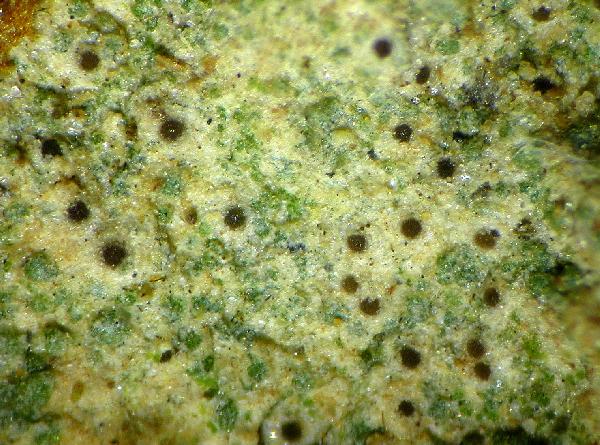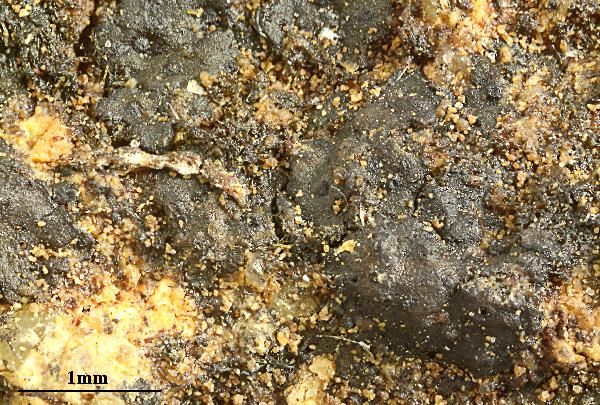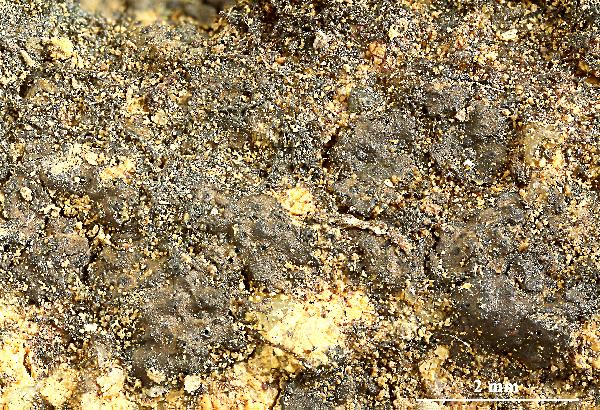Absconditella sychnogonioides (Nitschke) Suija & van den Boom
Mycol. Progr., 22, 6, no. 46: 46, 2023. Basionym: Geisleria sychnogonioides Nitschke - in Rabenhorst, Lich. Europ. Exsicc., 21: no. 574, 1861
Synonyms: Strigula sychnogonoides (Nitschke) R.C.Harris
Distribution:
Description: Thallus crustose, endosubstratic or very thinly episubstratic, grey-white or grey-green, continuous to rimose. Ascocarps at first perithecioid, obpyriform to subglobose, 0.2-0.35 mm across, entirely immersed, only the pale brown apical part visible, later apothecioid (gyalectoid), with an expanded, urceolate disc (but in the dry state the apothecia may shrink considerably, re-assuming a perithecioid appearance). Proper exciple colourless, of conglutinated, parallel hyphae; hymenium colourless, K/I-; paraphyses slender, < 1 µm thick, simple or sparingly branched, hypothecium thin, pale. Asci 8-spored, cylindrical to cylindrical-clavate, thin-walled, with a distinct, K/I- apical dome penetrated by a long, narrow tube extending from the endoascus, with 1-2-seriately arranged ascospores, 75-120 x 8.5-12.5 µm. Ascospores 3-septate, not constricted at septa, hyaline, ellipsoid to subfusiform, 17-23(-28) x 6-8 µm. Photobiont chlorococcoid, the cells 6-12 µm wide. Spot tests: thallus K-, C-, KC-, P-. Chemistry: without lichen substances. Note: a pioneer species found on clay or sandy-clay soils, more rarely on organic acid soil and siliceous rocks. For a long time considered as a pyrenocarpous lichen, the species actually produces gyalectoid apothecia (see Aptroot & al. 2014, Suija & van den Boom 2023).
Growth form: Crustose
Substrata: soil, terricolous mosses, and plant debris
Photobiont: green algae other than Trentepohlia
Reproductive strategy: mainly sexual
Pioneer species

Predictive model
Growth form: Crustose
Substrata: soil, terricolous mosses, and plant debris
Photobiont: green algae other than Trentepohlia
Reproductive strategy: mainly sexual
Pioneer species

Predictive model






